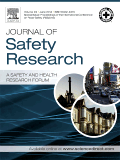 A research paper in the Journal of Safety Reasearch has found that gender is linked to the type of severe or fatal crash a young driver will be involved in.
A research paper in the Journal of Safety Reasearch has found that gender is linked to the type of severe or fatal crash a young driver will be involved in.
The study, led by Sunanda Dissanayake, Ph.D. and Niranga Amarasingha, Ph.D. of Kansas State University was based on the evaluation of information collected from the state transportation department’s crash database that included 150 variables about motor vehicle crashes in Kansas. They looked at data from 2007 to 2011 that involved drivers aged between 16-24 years.
Results indicated that some variables are significantly related to female drivers’ injury risk but not male drivers’ injury risk and vice versa. Variables such as driving with valid licenses, driving on weekends, avoidance or slow maneuvers at time of crash, non-collision and overturn crashes, and collision with a pedestrian were significant variables in female driver injury severity model but not in young male driver severity model. Travel on graded roadways, concrete surfaces, and wet road surfaces, collision with another vehicle, and rear-end collisions were variables that were significant in male-driver severity model but not in female-driver severity model.
They noticed that when compared to males, young females were more likely to wear seat belts, more likely to drive on restricted license, and were more more likely to be involved with crashes at intersections and collisions with pedestrians.
Males were more likely than females to have a crash after sunset, more likely to be involved in off-road crashes, and more likely to be involved in crashes during the weekends.
It is important to note that the findings of this study show that gender differences do exists among young drivers. This sends a message to the industry that the transportation professionals and researchers, who are developing countermeasures to increase the traffic safety, may need to pay attention to the differences. This might be particularly true when developing education materials for driver training for young/inexperienced drivers.
For the complete article from the Journal of Safety Research, Volume 49, June 2014, Pages 113.e1-120, visit their website at
http://www.sciencedirect.com/science/article/pii/S0022437514000358
Search TeenAuto
Socialize with Us
Like us on FacebookFollow us on TwitterWatch our Channel